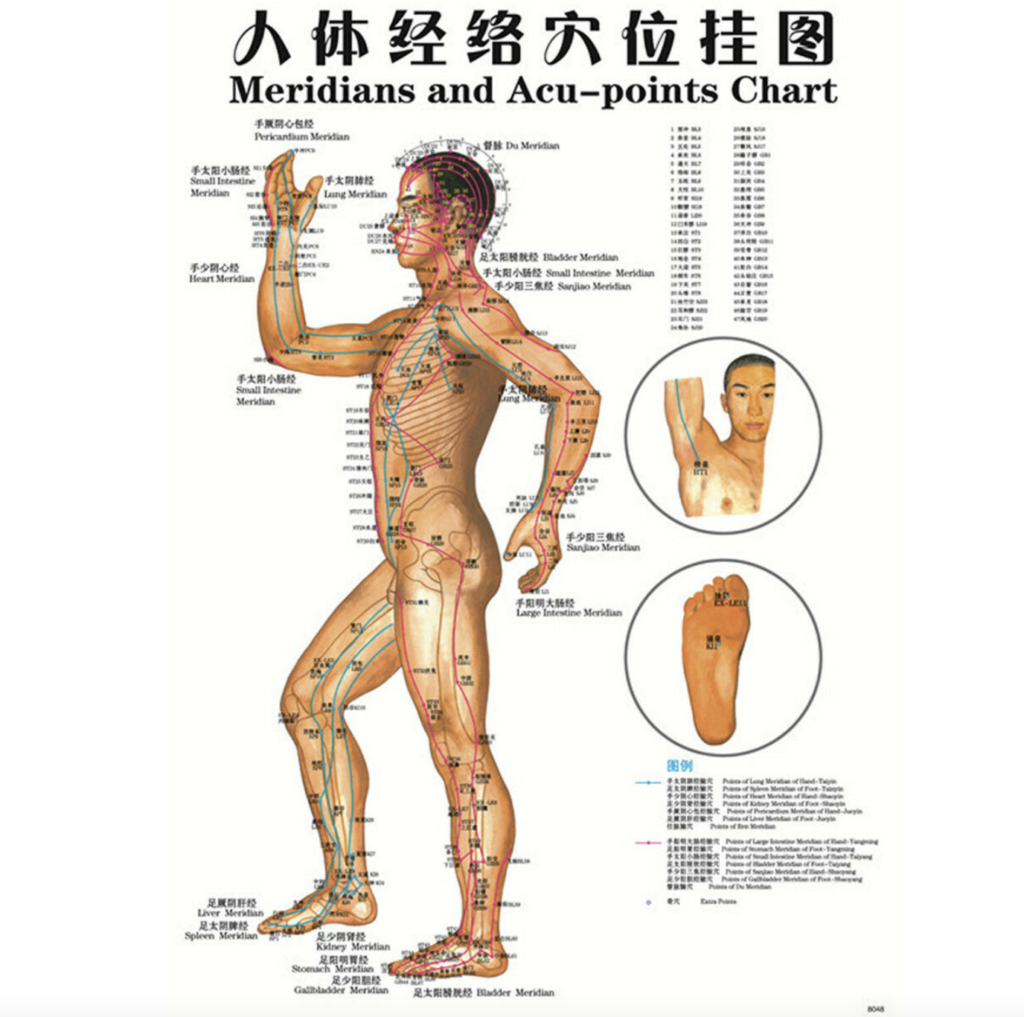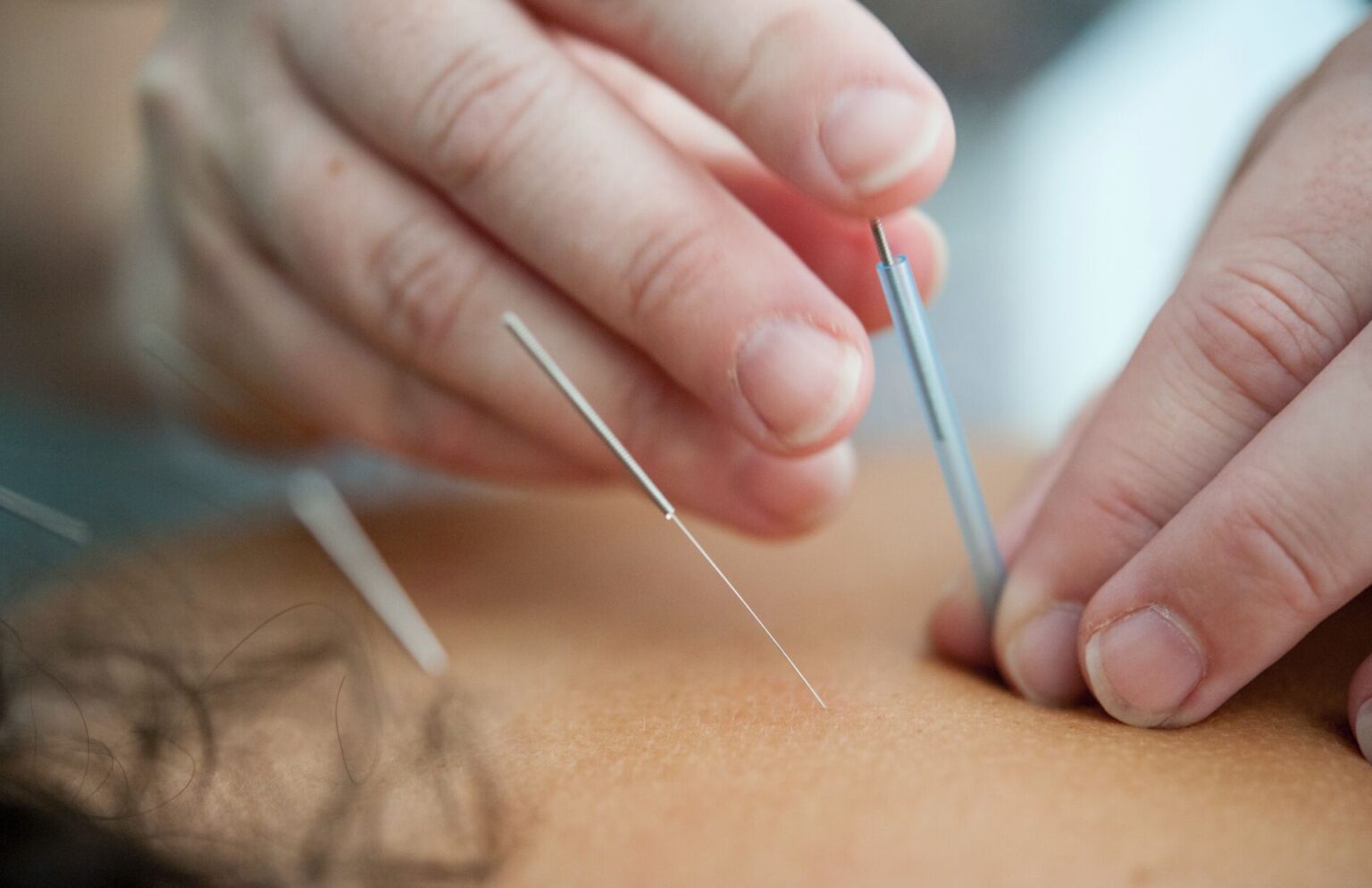When I am performing needling on a patient for the first time, I am regularly asked what the difference is between acupuncture and dry needling. For many, these two treatments are one and the same, but despite their similarities, they also have their differences.
Acupuncture
Acupuncture is one branch of Traditional Chinese Medicine (TCM), the others being herbal medicine, nutrition, movement (Qi gong), and manual therapy (cupping, tui na massage, and gua sha). Acupuncture involves inserting needles at specific points and utilizes the ‘meridian theory’ as its basis for treatment. On an acupuncture chart you will notice lines, or meridians, drawn throughout a person’s body. A meridian may travel from the hand to the head, the foot to the abdomen, or from one end of the spine to the other. Meridians connect different parts of the body to each other. Each meridian is linked to an internal organ, such as your liver, lung, or heart. There are 12 primary meridians, one for each organ, along with 2 ‘extraordinary’ meridians, which are commonly used in practice.

Based on the theories of TCM there is an energy force called ‘Qi’ flowing along the meridians. Qi is responsible for keeping our tissues healthy, youthful, and disease free. The smooth flow of Qi along the meridians is imperative for optimal health. When Qi does not flow well or is stagnate, pain, injury, and disease can arise. When a needle is used to stimulate an acupuncture point in clinical practice, the goal is to restore the flow of Qi along the meridian. When Qi is flowing freely throughout your body, you will feel vital and energized.
Dry Needling
The origins of dry needling and trigger point theory are closely related. Trigger point theory refers to the idea that pressing on a tight, tender band of muscle tissue will often refer pain to a different area of the body. For instance, stimulating a trigger point in the upper trapezius muscle of the shoulder may cause pain in the temporal region of the skull. Researchers began mapping these ‘referral patterns,’ which appeared to be consistent from person to person. Janet Travell and David Simons are arguably the two most influential contributors to trigger point theory and their pain referral charts are still widely used today. Early researchers of the trigger point theory used needle injections of local anesthetics to map the associated referral areas for each trigger point. Interestingly, the treatment benefit would often outlast the anesthetics known treatment time. It was at this point researchers realized it was actually the needle insertion into the trigger point, rather than the anesthetic itself, providing the therapeutic effect. Dry needling is referred to as ‘dry’ because there is no anesthetic or saline injection used during the needling treatment.
Similarities Between the Two
In general, the local effect of the needle is the same whether you are performing acupuncture or dry needling. At a microscopic level, the needle is causing a local micro-trauma or small injury to the tissues, which stimulates the body to send blood and healing products to the area. Needling is a viable treatment for areas receiving poor blood flow, such as tendons, ligaments, and the periosteum of bone. By stimulating blood flow to these traditionally ‘avascular’ or low blood flow areas, the patient’s recovery from tendinous and ligamentous injuries can be accelerated.
In my practice I use a combination of acupuncture and dry needling. I often do dry needling at the site of pain, and then utilize local, adjacent, and distant Chinese medicine acupuncture points to help move Qi and blood throughout the body. As a chiropractor, I utilize many spinal points to help with painful conditions of the neck and low back. Combining a spinal chiropractic adjustment with needling in the same area is extremely helpful for patients. Acupuncture and chiropractic care complement each other wonderfully. Chiropractic care helps the neurologic and orthopedic systems function better, while acupuncture helps with systemic health by improving the flow of Qi and blood throughout the body. Combining a Western orthopedic approach with an Eastern Chinese medicine approach is an excellent way to help patients achieve optimal health.
Post Written by Dr. Riley Kulm DC. Check out Dr. Riley Kulm’s bio here.


